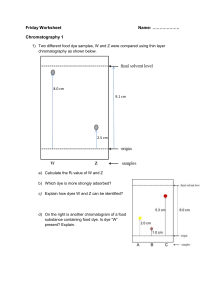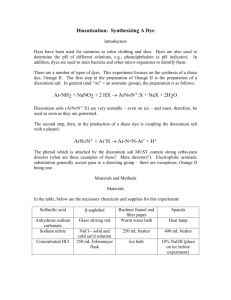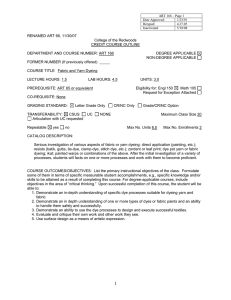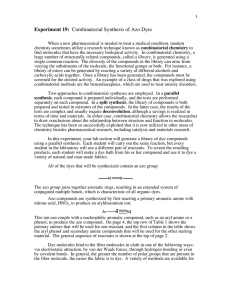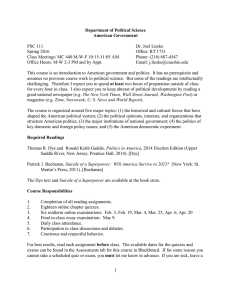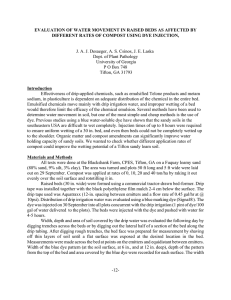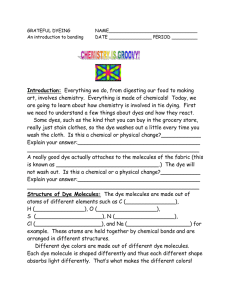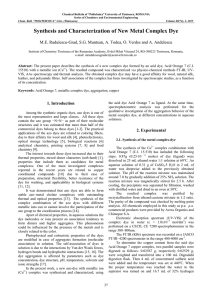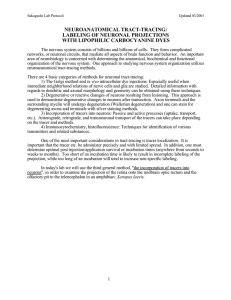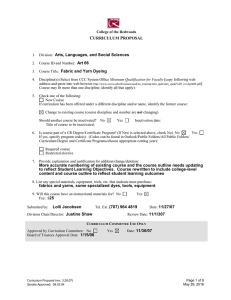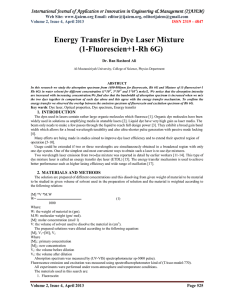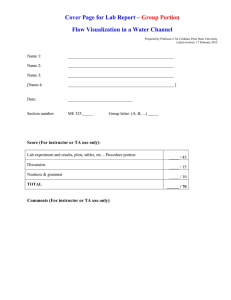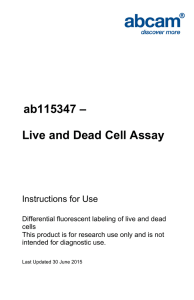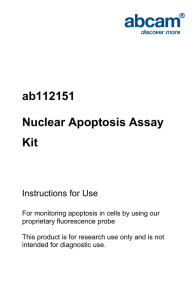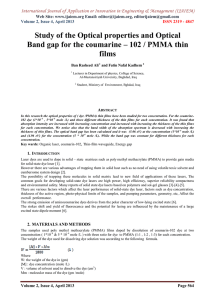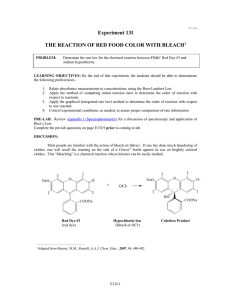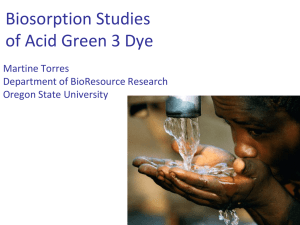Lab Report: Combinatorial Chemistry: Parallel Synthesis of Azo Dyes % SCORE:
advertisement
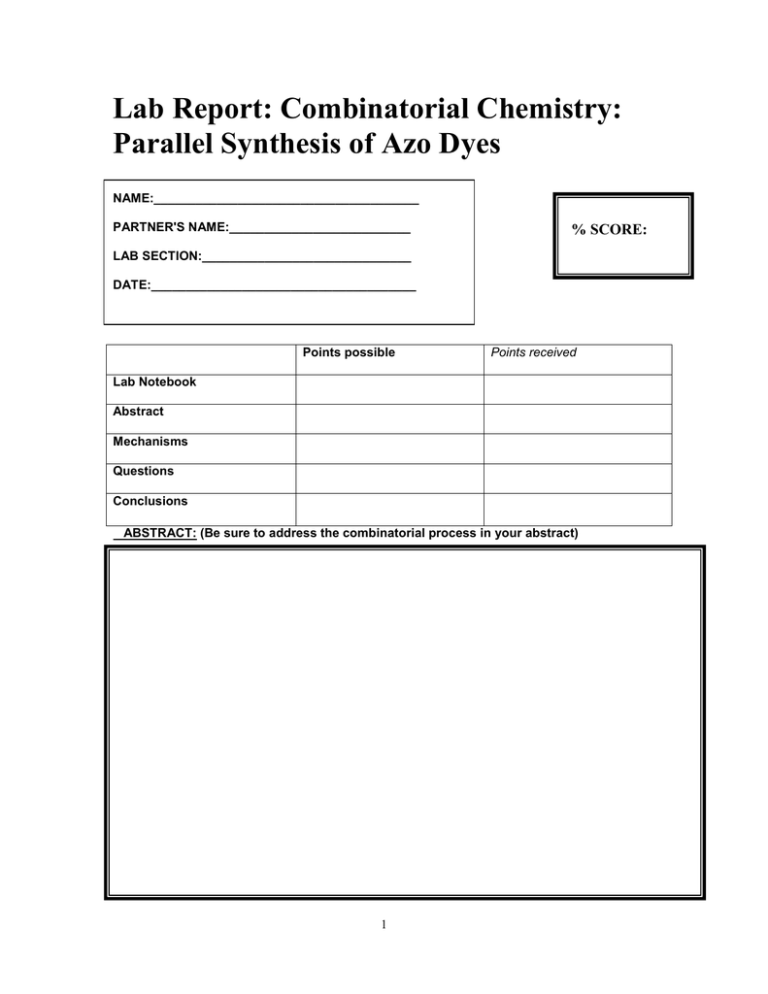
Lab Report: Combinatorial Chemistry: Parallel Synthesis of Azo Dyes NAME:______________________________________ PARTNER'S NAME:__________________________ % SCORE: LAB SECTION:______________________________ DATE:______________________________________ Points possible Points received Lab Notebook Abstract Mechanisms Questions Conclusions ABSTRACT: (Be sure to address the combinatorial process in your abstract) 1 B. REACTION MECHANISMS 1. Showing all lone pairs and formal charges, draw 3 resonance structures for the nitroso ion (NO+). 2. Showing all lone pairs, and formal charges, draw 2 resonance structures of the aromatic diazonium ion showing the changing bond order between the nitrogens. N2 3. Draw a complete mechanism for the reaction of the diazonium salt of 4-diazobenzenesulfonic acid with 1-naphthol. What type of reaction is this? ___________________________ (Electrophilic Addition, Nucleophilic Addition, Nucleophilic Substitution, Electrophilic Substitution, Elimination) OH N2 Cl + SO3H 2 C. QUESTIONS Refer to the supplemental article on Dyes and Dying located in the Experiment Blackboard folder to help answer the following questions. 1. Draw the structural formulas of each fabric component of the test strip used in this lab. Describe all functional groups present within each component. Test Band Strip Chemical Structure Functional Group Acetate Rayon Cotton Nylon 6,6 Dacron 6,4 (polyester) Orlon 7,5 (polyacrylonitrile) Wool 2. What type of dying process did you use to dye your cloth, ingrain, direct, vat or mordant? 3. What is the purpose of adding sodium carbonate to the aminobenzenesulfonic acid before reacting it with the sodium nitrite? 4. Does the structure of the diazo compound have a large affect on the dye produced? Explain using observations of class fabric strips. 3 5. Does the structure of the coupling compound have a large affect on the dye produced? Explain using observations of class fabric strips D. CONCLUSIONS Using the color intensity of the dyed fibers as a qualitative tool, comment on the relative ability of the various test fibers to take on dye. Relate this to the chemical structure of the fibers and the dye. Discuss the intermolecular forces holding the dye to the fabric. Be specific to the structure of your dye. 4
